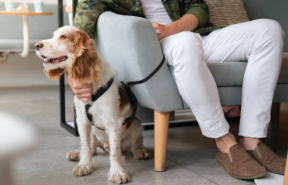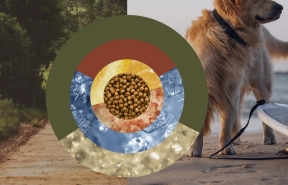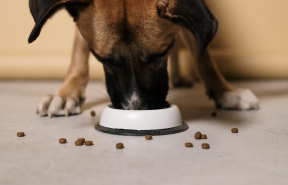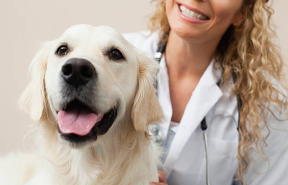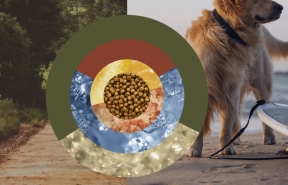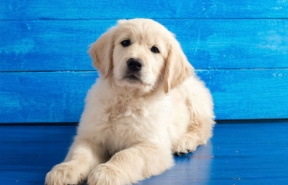Aggression is an important subject in the world of dogs. A quick look at the newspaper is all that is needed to understand this is an important issue for pet owners and the wider community. Dr Debbie Calnon is a well-respected veterinarian, with additional qualifications in behavioural medicine, and we're sure that her article will be a great benefit to owners of dogs that have displayed some level of aggression either towards other people or animals. We strongly recommend owners of dogs exhibiting aggressive behaviour seek professional veterinary behavioural advice.
Is it all my fault?
Many owners of dogs with aggression problems are concerned that they are responsible for creating this snarling ball of fluff in their midst. The overwhelming majority of dog owners would not choose to own an aggressive dog. Unfortunately, some dogs have quite a strong genetic predisposition to be aggressive in certain circumstances.
In the work that I do assisting owners with dogs with various problems (the most common of which is aggression of one sort or another), it is rare to see a case where the owners are the primary cause of the dog's problem. There are some "problem" dogs out there who have terrific owners committed to improving their behaviour for the better. It is important not to allow misplaced guilt or denial to act as barriers to recognising and treating the problem.
Is this the dog for me?
It is said that beauty is in the eye of the beholder. A similar adage could be used for owners of dogs with aggression issues. It all comes down to the degree of risk that any owner is willing to take with regard to their dog's behaviour. Clearly, it is also important that these owners understand their social and legal responsibilities in ensuring their dogs don't harm other people or pets.
Any dog has the ability to bite - but some have to be challenged much more than others to elicit this response. Levels of aggression are on a continuum - with some at the very high end and others at the very low end, with most somewhere in between these two extremes. A dog with a history of aggression will always be a more risky proposition than one who has never shown this type of behaviour.
What are my options?
The majority of dogs who show aggression tend to do so toward particular targets and in particular situations. The archetypal devil dog who can't wait to sink his teeth into all and sundry is, thankfully, more at home on the silver screen than in reality. Most dogs with aggression problems are well behaved most of the time.
However, any history of aggression is a very significant part of your dog's behavioural repertoire. It means these dogs need more direction and supervision than your average dog. Behaviour modification takes a significant amount of time and dedication with no absolute guarantees. In some instances owners will elect euthanasia. Euthanasia is a very difficult and sometimes distressing decision, but may be required for the safety of other people or animals that come into contact with the dog. Professional advice should be sought to enable owners to explore the risks and management/treatment options in detail.
How can I help?
It is important that your dog doesn't practice his unwanted behaviour. Often the dog may perceive he is rewarded for acting in a socially unacceptable way. Take, for instance, a dog who is anxious about men approaching him and inclined to be aggressive toward them. If the dog growls and lunges as the man approaches, then it is likely the man will come no further and walk away. The dog will feel a huge sense of relief as the man disappears. Unfortunately, this will encourage the dog to try an aggressive strategy in the future.
It is now recognised that the aggressive response, in itself, produces certain chemicals in the brain that make the dog feel good too. Similar to the "rush" you might feel after surviving a trip on a roller coaster. So even if the man had decided to stay around the dog is learning that aggressive behaviour is rewarding and worth repeating. Obviously, the chance of someone being injured makes it imperative to avoid repeating aggressive responses.
Avoiding triggers for aggression can be difficult to carry out, but is very important if your dog's behaviour is to improve. It might mean changes in the way you manage your dog in the short term. The type of change will depend on the circumstances where the problem behaviour occurs.
A few examples might include altering when or where you walk your dog, removing your dog from the front door when visitors arrive or providing a covered crate for your dog to travel in. It is ideal if you can identify the triggers for your dog's aggression. Then devise a strategy that will prevent your dog from being exposed to these triggers while he has an opportunity to learn a more appropriate response.
Is a muzzle a good idea?
Muzzles will reduce the risk of bite injuries. However, they are not an absolute guarantee in this regard (straps can break, buckles can become undone etc) and dogs can still do damage by scratching,
or bowling other individuals over and so forth. It is also very important not to put your dog into a situation that you feel would perhaps have caused him to bite if he were not wearing his muzzle. Each time your dog would prefer to bite, but the muzzle does not allow this reaction, he is learning that the situation is frustrating and unpleasant. This may increase the risk of him biting in that same situation in future. So behave as if your dog were not wearing a muzzle, even when he is. That is the only way to be fair to your dog and not set him up for disaster.
A muzzle should allow a dog to pant if he is going to be wearing it for anything more than a few minutes. A plastic or leather basket style muzzle is a good choice. Choose one that allows treats to be given at the front, but is not open enough to allow nipping. These muzzles are lightweight too, which is a real bonus if your dog ever runs into you while wearing it.
If the dog is introduced to the muzzle gradually, then he will accept it readily. Encourage your dog to approach the muzzle and offer a treat. Place a piece of food at the strap end and allow him to eat it. During a few repetitions you can place food treats further into the muzzle so he puts his muzzle right into the basket. Then do the strap up momentarily and progress to him wearing it for a few seconds and then a minute or two and so on.
Always associate the muzzle with good things. Some muzzles will need a little modification to allow food treats to be given - make sure you do this if needed. Peanut butter, pâté, cream cheese etc can all be applied inside the muzzle as an added incentive to want to keep it on too. Soon your dog will be pleading with you to put that muzzle on!
Change the association
Aggression is an emotional response by your dog. In most cases it is a result of your dog feeling anxious or angry with a particular stimulus (person or animal) in their environment. The cornerstone of modifying the dog's response to this stimulus is to start associating it with something positive.
We might revisit the example above, of the dog that is fearful of men. It is ideal to set up a situation where a dog-friendly man will appear and disappear at varying intervals. Begin at a distance at which your dog is settled and calm. As soon as your dog is aware of the man, then offer some special treats. Continue with these until the man disappears from view and then totally ignore your dog. Have the man appear again and offer treats as he does so. When he disappears from view then the treats and attention stop. Your dog will need many repetitions of this exercise to make the association that man = fun and treats; no man = boring. It is important your dog doesn't become stressed about an approaching man in between these sessions if progress is to be made.
Fill the gap
Teaching an alternate behaviour to take the place of the aggressive response is the best chance of modifying that response in the long term. You are likely to need professional assistance with this step of a treatment programme.
It's a dog's life
Dogs might seem similar to "four legged people" at times. However, we do them a disservice if we assume they have the same set of moral and ethical values as people. A dog will behave aggressively if he perceives it is in his best interest to do so.
Time, patience and understanding are required for the dog to learn that an alternate behaviour is even more rewarding. Professional assistance in undertaking a treatment plan for your dog is important to achieve the best results safely.
Dr. Debbie Calnon receives referrals for dogs and cats to her Behaviour Counselling Service in Victoria. She can be contacted via email on drdebbie@netlink.com.au
